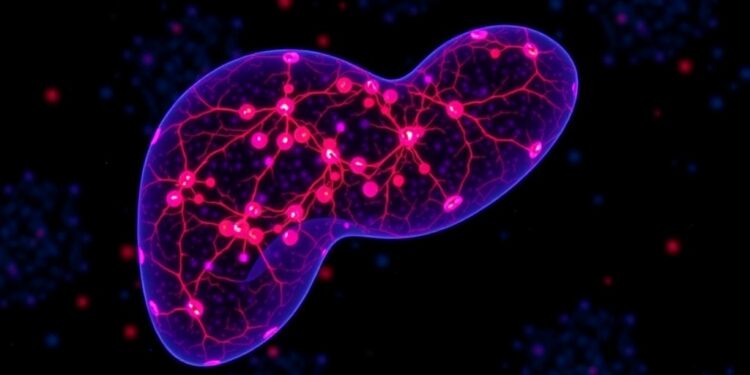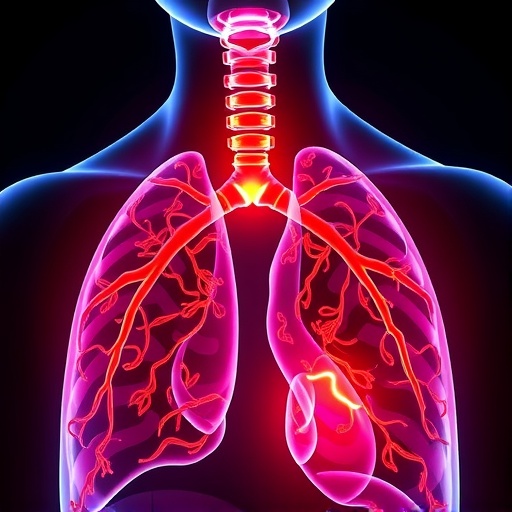Hepatic stellate cells (HSCs), once primarily recognized for their role in driving liver fibrosis, have emerged as crucial regulators of liver metabolism, regeneration, and overall organ size, according to pioneering research led by scientists from the German Cancer Research Center (DKFZ), the Mannheim Medical Faculty, and Columbia University in New York. This new understanding unveils the complexities of HSCs, highlighting them not just as antagonistic entities in liver pathologies, but as vital components in maintaining liver homeostasis and functionality.
The liver, a versatile organ, is integral in processing carbohydrates, proteins, and detoxifying harmful substances. It possesses a remarkable ability to regenerate, particularly important given its multifaceted roles in metabolism. Hepatocytes, which constitute around 60% of liver cells, execute these critical metabolic functions, while other cell types, such as endothelial cells, cholangiocytes, and Kupffer cells, participate in various supportive roles that ensure the liver’s functionality.
Hallmarked by their unique position in the specialized blood capillaries known as sinusoids, hepatic stellate cells contribute to liver architecture and function. Historically, their primary association with fibrosis, particularly in chronic liver diseases, has overshadowed their potential physiological roles. Recent investigations, however, have shifted this narrative, as researchers now appreciate that stellate cells are pivotal to hepatic regeneration and metabolic regulation.
In a groundbreaking experiment, researchers crafted genetically modified mice devoid of hepatic stellate cells. The absence of these cells led to significant impairments in liver detoxification processes and regenerative capabilities following injury. Intriguingly, the intricate design of liver lobules, which consists of hepatocytes organized according to metabolic demand and function, was drastically altered in the absence of stellate cells. This disruption underscores the essential structural and functional contributions of HSCs to liver health.
Central to this new understanding is the protein Rspondin 3 (RSPO3). Produced predominantly by hepatic stellate cells, RSPO3 is instrumental in modulating the WNT signaling pathway that governs various functions in liver cells. The research team elucidated that the specific knockout of RSPO3 in stellate cells mirrored the effects observed with the complete elimination of these cells, emphasizing the critical role of this protein in orchestrating liver functionality.
Clinical observations from patient data further substantiate the importance of RSPO3 in liver health. Low levels of this protein correlate with poor disease outcomes in individuals suffering from alcohol-associated and metabolic liver diseases. These findings open up exciting avenues for therapeutic strategies—rather than attempting solely to inhibit the actions of stellate cells to prevent fibrosis, future treatment approaches may seek to enhance their protective and metabolically supportive roles.
The ability of the liver to regenerate is not just a consequence of hepatocyte function but is intricately linked with the activities of stellate cells. The architecture of the liver lobules, as well as the regeneration following injury, rely heavily on the intact and functional nature of these cells. This intricate relationship highlights the need for an integrated understanding of liver cellular dynamics to develop effective interventions for liver-related ailments.
Moreover, the research presents a paradigm shift in how liver diseases are perceived and addressed in clinical settings. There is a growing recognition that fostering the beneficial aspects of hepatic stellate cells could revolutionize treatment methodologies. It promotes the idea that rather than pursuing a one-dimensional strategy focused on fibrosis prevention, a multi-faceted approach celebrating the regenerative and protective attributes of these cells could yield more positive outcomes for patients.
As we glean deeper insights into the multifarious roles of hepatic stellate cells, developing a nuanced understanding of their functions will be paramount in advancing therapeutic options for liver diseases. This newfound knowledge not only enriches our understanding of liver biology but might also transform clinical practice, yielding hope for more effective treatment paradigms in the future.
In summary, the burgeoning evidence surrounding hepatic stellate cells and their influence on liver metabolism and regeneration underscores the complexity of liver pathology. The acknowledgment that HSCs play a dual role—contributing to both fibrosis and liver health—paves the way for innovative avenues in liver research. This research could significantly alter the landscape of hepatology, challenging preconceived notions and offering fresh possibilities for patient care and treatment strategies.
As we look forward, exploration into the regenerative pathways influenced by hepatic stellate cells could illuminate new biotechnological applications and therapeutic interventions aimed at preserving liver health and enhancing recovery from liver injuries. Given the organ’s essential functions and the implications of liver diseases on overall health, such advancements are profoundly critical and eagerly anticipated by the medical and scientific communities.
Understanding these mechanisms presents a critical opportunity not only for biologists and medical researchers but also for clinicians seeking to implement more effective treatments in practice. The journey of hepatic stellate cells from mere fibrosis drivers to key players in liver function epitomizes the dynamic nature of scientific discovery and the continually evolving comprehension of our body’s organ systems.
Subject of Research: Hepatic Stellate Cells and Liver Metabolism
Article Title: Hepatic Stellate Cells Play Pivotal Role in Regulating Liver Function and Size
News Publication Date: October 2023
Web References: DOI link
References: Augustin, Hellmut G., and Schwabe, Robert F. (2023). Hepatic stellate cells control liver zonation, size, and functions via Rspondin 3. Nature. DOI: 10.1038/s41586-025-08735-3
Image Credits: Augustin / DKFZ
Keywords: Hepatic Stellate Cells, Liver Metabolism, Liver Regeneration, Rspondin 3, Liver Health
Tags: cholangiocytes contribution to liverchronic liver disease pathwaysendothelial cells in liver functionhepatic cell types and interactionsHepatic stellate cells functionshepatocyte roles in liverKupffer cells in liver healthliver architecture and functionliver fibrosis researchliver homeostasis maintenanceliver metabolism regulationliver regeneration mechanisms





